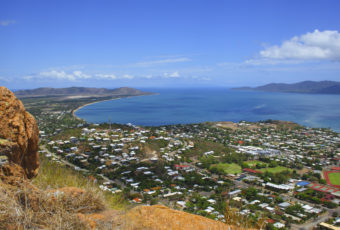Water key to cooling Australian cities
A group that comprises Australia’s top water experts has welcomed a federal government plan to make cities greener and cooler.
The Cooperative Research Centre for Water Sensitive Cities (CRCWSC), which includes researchers from universities across Australia and experts from local and state governments, and water utilities and private industry, welcomed the plan announced in Sydney by acting Cities Minister Mr Greg Hunt.

The Centre’s acting chief executive officer, Professor Jurg Keller from the University of Queensland, said water played a key role in making cities and towns more livable.
“Heat waves are an emerging urban health crisis, and greening our cities helps reduce the problem,” he said. “Trees and green parks need water. They save energy, improve our comfort and foster a social and active lifestyle, so greening our cities is critically important for our well-being.”
Professor Keller said the CRCWSC was a well-connected, national research centre, and was keen to work with the federal government on efforts to create to greener, healthier cities.
“Delivering green cities requires integrated and coordinated action by councils, urban water authorities, state governments and private industry, so it’s encouraging to hear that the federal government will develop a vision for greener Australian cities and work with the states to implement this vision.”
CRCWSC urban climate researcher Professor Nigel Tapper, from Monash University, said there was strong evidence that a green, leafy park, tree-lined street or urban waterway could drop the local temperatures by several degrees.
“This cooling is extremely important for reducing heat-related deaths, particularly during the very hot days of the year, which we’re seeing more often and for longer periods nowadays,” he said.
“Just as households and industries, the vegetation in our cities depends on water. We need to make the most of what is a limited resource, and the Centre is identifying novel solutions to keep our cities green using new water sources and efficient water usage.”
CRCWSC urban planning expert Professor Darryl Low Choy, from Griffith University, said it was important to incorporate water into all facets of planning from strategic regional and metropolitan scale plans, through to district and suburban plans, right down to subdivisional and site scale plans.
“This enables cities to maximise the benefits of all sources of water, including stormwater, groundwater and new water supplies such as desalination and water recycling,” he said.
“If water is added as an afterthought in the planning process, we miss major opportunities of the integrated approach.”
*
































Ask A Question
Ask us about your program of interest, or if you have a question about our services.
CONTACT US TODAY